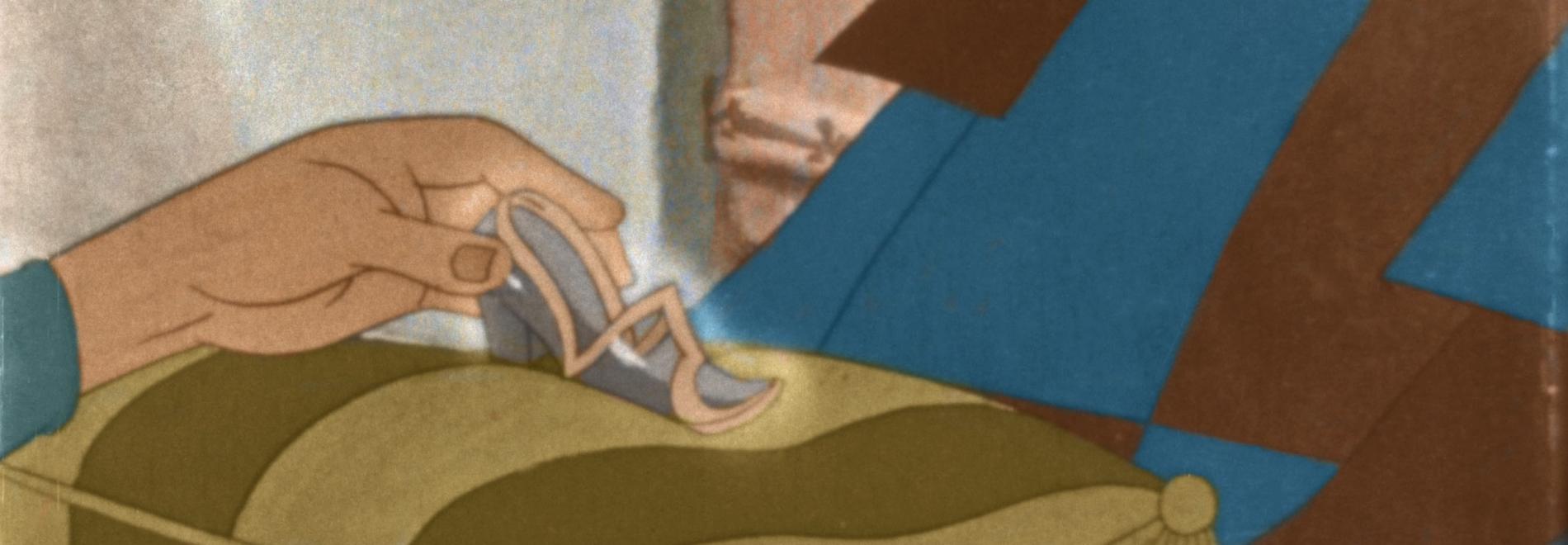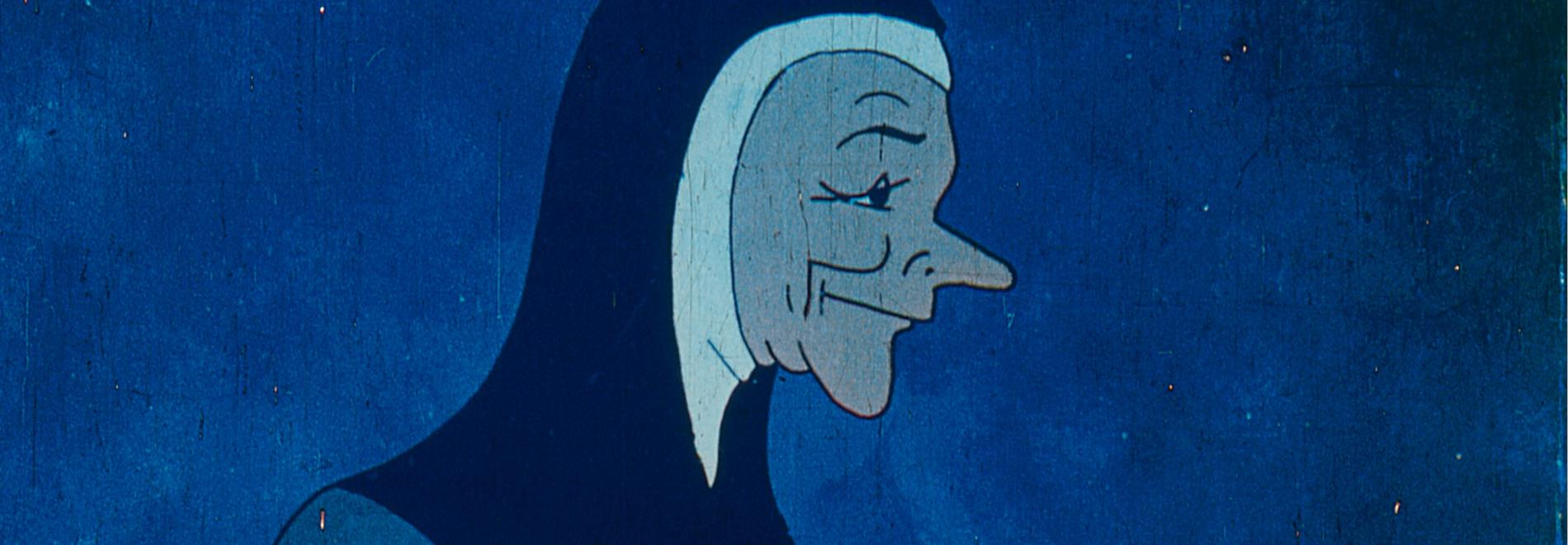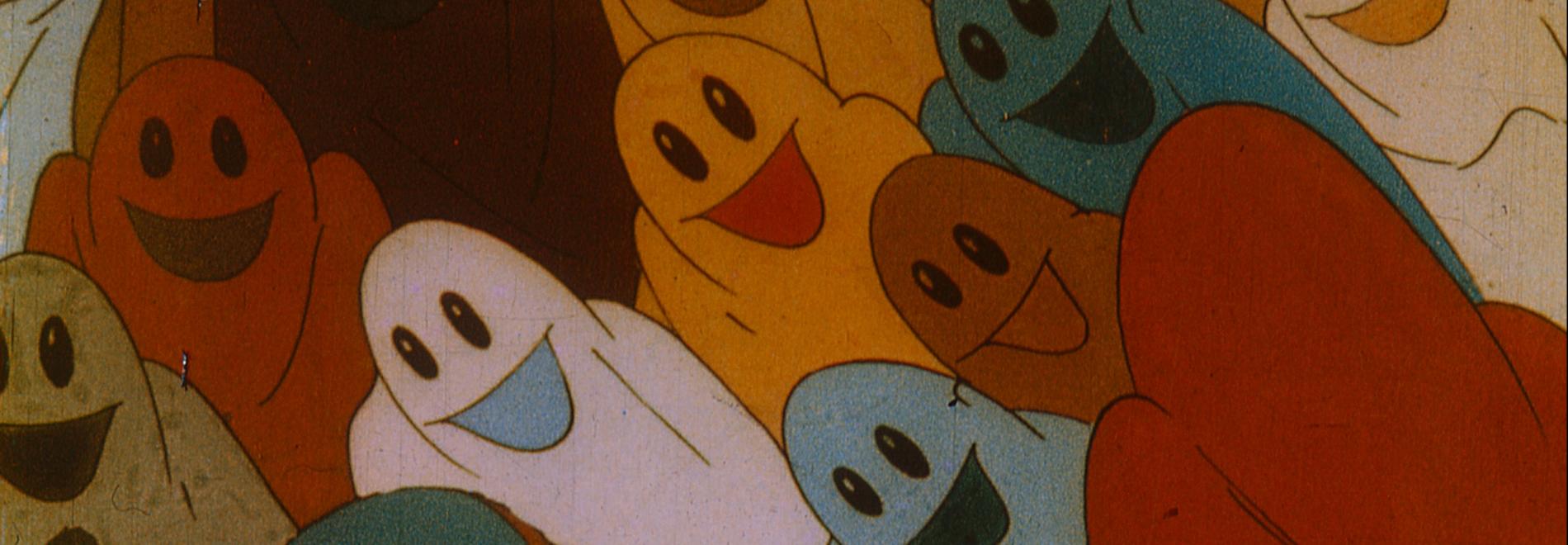Érase una vez...
Érase una vez... (Once Upon a Time...) is a Catalan animated feature film released in 1950 and produced in 35 mm using the Cinefotocolor system. It was officially recognised to be of national interest and obtained a special mention at the eleventh edition of the Venice Film Festival. This film involved the participation of prominent Catalan figures, intellectuals, politicians, artists and technicians, who worked to make this title an emblem of Catalan cinema and a benchmark in animated film.
A Bit of History
The Filmoteca de Catalunya has spearheaded a lengthy restoration project of Érase una vez... (1950). This is the second Spanish animated feature film to undergo this process, a replica of the Garbancito de la Mancha project conducted three years earlier, also in Barcelona, despite being of a completely opposite ideological persuasion. Whereas the quixotic variant of the tale of Tom Thumb by Balet and José Maria Blay Castillo (distributor of Francoist documentaries during the Spanish Civil War) exalted the patriotic values of the time, Érase una vez... represented an amalgamation of various Catalanist elements.
This adaptation of Charles Perrault's Cinderella was the brainchild of Josep Baguñá. Son of the founder of satirical magazines and children's comic, Patufet, he developed animation film in Catalonia just as the Spanish Civil War ended, making some major investments, such as in the Chamartín studios, one of the largest in Spain. The artistic director of the film was Josep Escobar, a cartoonist who had been working in the field since the 1920s and had been in the employ of the Baguñá brothers' Hispano Grahe Film studios during the Spanish Civil War, at the end of which he was imprisoned. He would later become one of the great strip cartoonists of the Editorial Bruguera stable, responsible for such popular characters as Carpanta, Petra and Zipi y Zape.
Having burnt through the initial budget assigned to the production of Érase una vez..., the project received the backing of Félix Millet Maristany, who was an insurance agent in Madrid with links to Acció Catòlica and patron of the Catalan culture tolerated at that time, as a promoter of the Orfeó Català choral society, the Jocs Florals literary contest, children's theatre, translations of literary classics and folklore shows. It was on his recommendation that Jordi Tusell, his film-obsessed nephew, was brought on board to take over production of the film, the first to come out of the subsequently prolific Estela Films studio.
The team also included the historian and future Entesa dels Catalans senator elected in the first democratic elections of 1977, Josep Benet, as head of production, as well as art critic and publicist, Alexandre Cirici Pellicer. It was the latter who, as artistic director, was responsible for the addition of the film’s remarkable Renaissance-inspired pictorial backgrounds. The film also includes a dance scene shot using real performers from Manuel Cubeles’s Esbart Verdaguer organisation.
A twist of fate saw the film’s release coincide with Disney's Cinderella, a title to which the studio already had the exclusive rights. Hence the change to Érase una vez... Shot in Cinefotocolor, the process developed by Daniel Aragonés as a modest local alternative to Technicolor, it obtained recognition at the 1950 Venice Film Festival and was distributed around Spain with eight copies.
The production of a version in Catalan, prohibited at that time, was never considered. Minimal official and financial support from the National Classification Board, only rectified after its success at the Venice festival, as well as the advice of the Sindicato Nacional del Espectáculo Film Union for the production company to focus its efforts elsewhere, condemned the film to ostracism. Only 16 mm black-and-white materials survived, which, due to its child-friendly story, was used for screenings in schools and religious centres.
Restoration Process
Eight years ago, conscious of the historical significance of Érase una vez..., the Filmoteca de Catalunya made the decision to restore it in a format that replicated the original as closely as possible. Led by La Bèstia Produce producer, Luciano Berriatúa, and our own conservator, Rosa Cardona, with the support of the Filmoteca’s Preservation and Restoration Centre, work began to identify the original colours provided by the more than 100 original 35 mm frames preserved in the Joan Gabriel Tharrats collection held at the Filmoteca, as well as the acetates in the possession of Benet's widow and other sources, such as a collection of trading cards published at the time.
Using a specially adapted computer system, colour has been reintroduced onto the black and white copy corresponding to references that closely match the original. The original soundtrack has also been restored. The original film producer’s grandson and heir to Estela Films, Félix Tusell, participated in the final recovery phase of a film that will be promoted and broadcast via cultural circuits.




